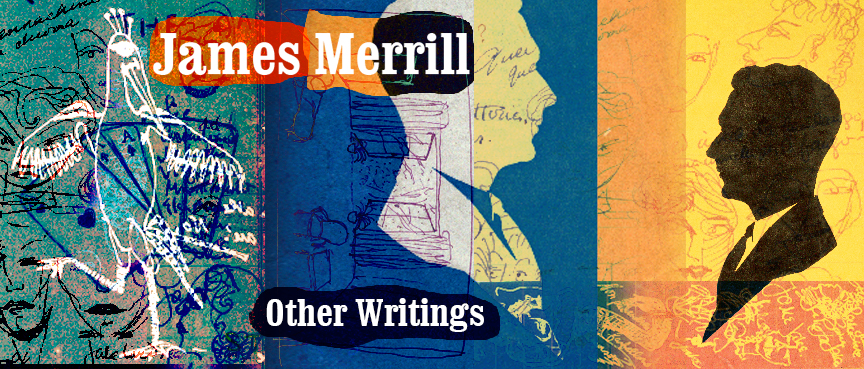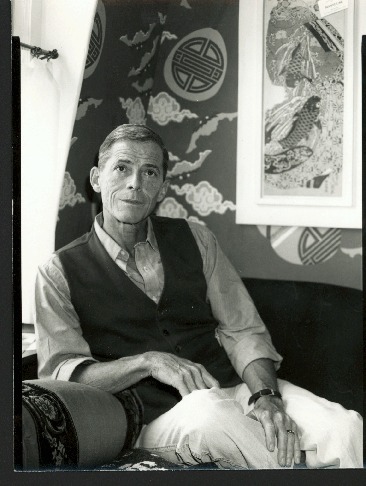The Summer Palace: James Merrill's Fantastical Wallpaper
In his 1960 introduction to an exhibit catalog on the painter Corot, James Merrill wrote, “The writer will always envy the painter.” This interest in the relationship between literature and the visual arts emerges years later in the poem Mirabell: Books of Number , in which we see Merrill the designer influence Merrill the poet.
Mirabell opens with the lines, “Oh very well, then.
Let us broach the matter / Of the new wallpaper in Stonington”; clearly, this paper was not a fiction. When Merrill asked his friend Hubbell Pierce to help him create wallpaper for the parlor of his home in Stonington, Connecticut, Pierce—an artist, entertainer, and owner of his own wallpaper firm—was more than happy to help.
The first reference to the wallpaper in Merrill’s correspondence appears in a letter from Pierce to Merrill in April, 1974. Over the course of their communications about the subject, Merrill explains that he wants his wallpaper to have the same motifs and colors as the Chinese rug that rests in his parlor. Early in Mirabell , Merrill describes the rug:
The border renders in two shades of tan
And three intensities of Prussian blue
Overlapping cloudlets that give way
To limber, leotarded, blue-eyed bats
—Symbols of eternity, said the dealer.
These, indeed, are the same patterns (in addition to fans with oriental designs) that appear in the wallpaper. Merrill also says in the opening of Mirabell that, like the rug, the wallpaper is just one of his and David Jackson’s efforts to add “grandeur” to their home. Although he is writing about material possessions, the wallpaper is more than mere interior design; it is the artistic creation of the collaboration between Merrill and Pierce.
Mirabell: Books of Number begins by describing the creation of the wallpaper. The wallpaper also provides the setting for the poem as it is an integral element of the room where Merrill and Jackson communicate with the spirit world via the Ouija board. As the poem continues, Merrill and Jackson find they are talking to creatures who say they look very much like the bats represented on the wallpaper—the symbols of eternity. The wallpaper has become the medium between the spirit world and the material world in the poem.
ames Merrill’s wallpaper is the location of many intertwining stories. As a work of art on its own and as the subject for another work of art, the wallpaper brings together the visual and the written. It is a place where the spiritual and the material meet. Through the wallpaper, the lines between reality and the created world of the poem blur. Now, we have broached the matter of the wallpaper.
Ida McCall and Margaret Funkhouser

